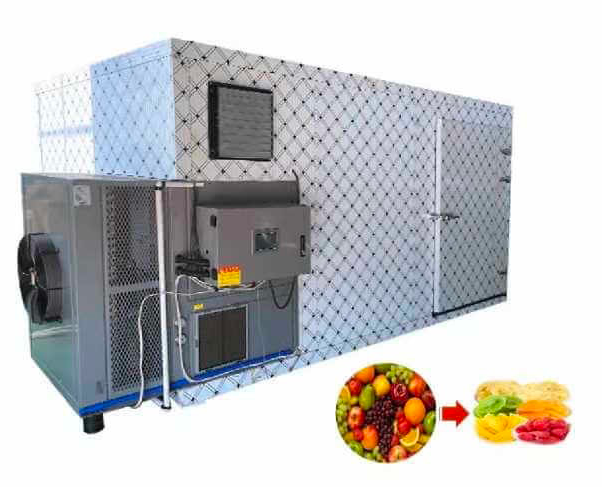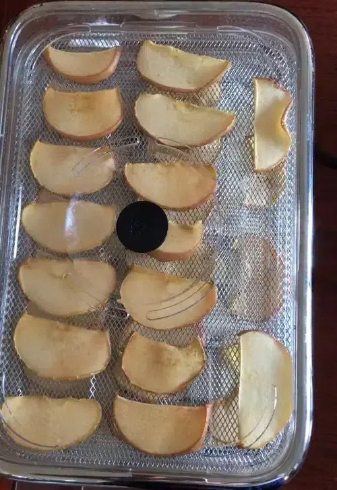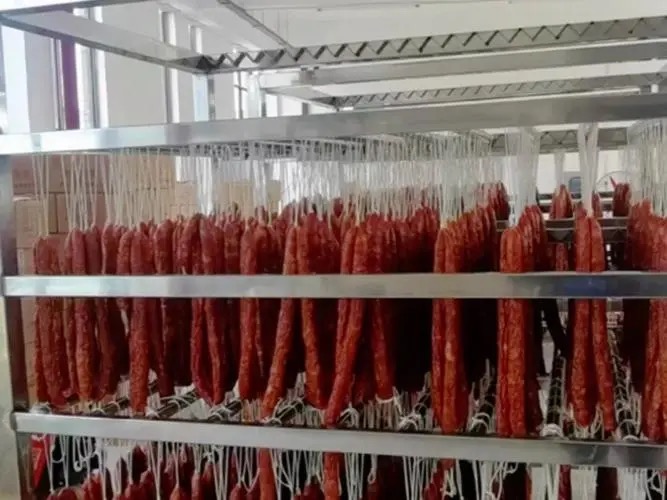
Content Menu
● Introduction
● Understanding Heat Pump Dryers
● Benefits of Heat Pump Dryers
● Key Features to Look For
● Popular Heat Pump Dryers in the Market
● The Drying Process Explained
● Applications of Heat Pump Dryers in Food Processing
● Cost Considerations
● Future Trends in Food Drying Technology
● Conclusion
● Frequently Asked Questions
>> 1. What is a heat pump dryer?
>> 2. How does a heat pump dryer differ from traditional dryers?
>> 3. What types of foods can be dried using a heat pump dryer?
>> 4. Are heat pump dryers environmentally friendly?
>> 5. How long does it take to dry food using a heat pump dryer?
Introduction
In the realm of food processing, the efficiency and effectiveness of drying methods play a crucial role in preserving the quality and extending the shelf life of food products. Among various drying technologies, heat pump dryers have gained significant attention due to their energy efficiency and ability to maintain the nutritional value of food. This article explores the best heat pump condenser dryers available, focusing on their energy efficiency, operational benefits, and applications in food drying.

Understanding Heat Pump Dryers
Heat pump dryers operate on a unique principle that allows them to extract moisture from food while using significantly less energy compared to traditional drying methods. They utilize a closed-loop system that absorbs heat from the environment and transfers it to the drying chamber. This process not only minimizes energy consumption but also ensures that the dried food retains its original color, shape, and nutritional content.
Benefits of Heat Pump Dryers
- Energy Efficiency: Heat pump dryers are known for their low energy consumption. They can use up to 70% less energy than conventional dryers, making them an eco-friendly choice for food processing.
- Preservation of Quality: By operating at lower temperatures, heat pump dryers help preserve the flavor, aroma, and nutritional properties of food products.
- Versatility: These dryers can handle a wide range of materials, including fruits, vegetables, herbs, meats, and seafood.
- Automated Control: Many heat pump dryers come equipped with advanced control systems that allow for precise temperature and humidity management throughout the drying process.
Key Features to Look For
When selecting a heat pump dryer for food processing, consider the following features:
- Capacity: Choose a dryer that can accommodate your production needs. Options range from small batch dryers to large industrial units.
- Temperature Control: Look for models with adjustable temperature settings to optimize drying conditions for different types of food.
- Air Circulation: Efficient air circulation systems ensure uniform drying by preventing hot spots within the drying chamber.
- Energy Rating: Check for energy efficiency ratings to determine long-term operational costs.
Popular Heat Pump Dryers in the Market
Here are some of the best heat pump condenser dryers currently available:
1. Model A: Known for its high capacity and efficient drying cycle, this model is ideal for large-scale operations. It features advanced moisture control technology that enhances energy efficiency.
2. Model B: This compact unit is perfect for smaller businesses. It provides excellent drying results while maintaining low energy consumption levels.
3. Model C: With a focus on versatility, this dryer can handle various types of food products and offers customizable settings for different materials.
4. Model D: This industrial-grade dryer is designed for high throughput and features robust construction for continuous operation in demanding environments.
5. Model E: A budget-friendly option that does not compromise on quality or efficiency. It is suitable for small to medium-sized enterprises looking to optimize their drying processes.

The Drying Process Explained
The drying process in a heat pump dryer involves several key steps:
1. Preparation: Raw materials are selected and cleaned thoroughly to remove any contaminants. This step is critical as any residual dirt or chemicals can affect the final product's quality.
2. Slicing: Food items are sliced into uniform pieces to ensure even drying. The thickness of slices can vary depending on the type of food; for instance, fruits may be sliced thinner than vegetables to achieve optimal results.
3. Loading: The prepared food is spread evenly on trays or racks within the dryer. Proper loading ensures that air can circulate freely around each piece of food, promoting uniform drying.
4. Drying Cycle: The dryer is set to an optimal temperature (typically between 20°C and 80°C) based on the type of food being processed. The heat pump circulates warm air around the food, facilitating moisture evaporation.
5. Cooling and Packaging: Once dried, foods are cooled before packaging to prevent moisture absorption from the air. This step is essential as it helps maintain product quality during storage and transport.
Applications of Heat Pump Dryers in Food Processing
Heat pump dryers are increasingly being adopted across various sectors in food processing due to their flexibility and efficiency:
- Fruit Processing: Heat pump dryers are ideal for dehydrating fruits like apples, bananas, and berries while preserving their natural sweetness and color.
- Vegetable Dehydration: Vegetables such as carrots, peas, and bell peppers retain their nutrients when dried using heat pump technology due to lower operating temperatures.
- Herb Drying: Delicate herbs like basil, oregano, and thyme benefit from gentle drying processes that prevent loss of essential oils and flavors.
- Meat Drying: For products like jerky or dried fish, heat pump dryers provide controlled environments that inhibit bacterial growth while ensuring thorough moisture removal.
- Snack Production: The growing trend towards healthy snacks has led many producers to utilize heat pump dryers for creating nutritious dried snacks without added preservatives.
Cost Considerations
Investing in a heat pump dryer involves several cost considerations:
- Initial Investment: While heat pump dryers may have higher upfront costs compared to conventional models, their energy savings often lead to lower operational costs over time.
- Maintenance Costs: Regular maintenance is essential for optimal performance; however, these costs are generally lower than those associated with traditional dryers due to fewer moving parts.
- Operational Savings: Businesses can expect significant savings on energy bills due to the high efficiency of heat pump technology compared to gas or electric conventional dryers.
Future Trends in Food Drying Technology
As technology advances, several trends are emerging in the field of food drying:
- Smart Technology Integration: Many modern heat pump dryers now feature IoT capabilities that allow operators to monitor performance remotely and receive alerts regarding maintenance needs or operational issues.
- Sustainability Focus: With increasing awareness about environmental impact, manufacturers are developing more sustainable models that utilize renewable energy sources or improve recyclability.
- Enhanced Automation: Automation in loading and unloading processes is becoming more common, reducing labor costs while increasing throughput efficiency.
Conclusion
Heat pump dryers represent a revolutionary advancement in food processing technology, offering unmatched energy efficiency while preserving the quality of dried products. For businesses looking to improve their drying processes, investing in a high-quality heat pump condenser dryer is essential. By understanding their features and benefits, companies can make informed decisions that enhance productivity and sustainability in their operations.

Frequently Asked Questions
1. What is a heat pump dryer?
A heat pump dryer is an energy-efficient appliance that uses a closed-loop system to extract moisture from food products while maintaining low temperatures during the drying process.
2. How does a heat pump dryer differ from traditional dryers?
Unlike traditional dryers that expel hot air outside, heat pump dryers recycle warm air within the system, significantly reducing energy consumption while ensuring effective moisture removal.
3. What types of foods can be dried using a heat pump dryer?
Heat pump dryers are versatile and can be used for various foods including fruits, vegetables, herbs, meats, seafood, and grains.
4. Are heat pump dryers environmentally friendly?
Yes, they are considered environmentally friendly due to their low energy usage and minimal emissions compared to conventional drying methods.
5. How long does it take to dry food using a heat pump dryer?
The drying time varies depending on the type of food and its moisture content but typically ranges from 4 to 8 hours for most products.












